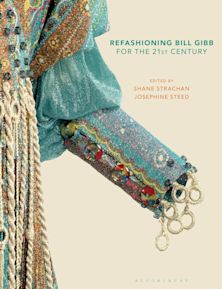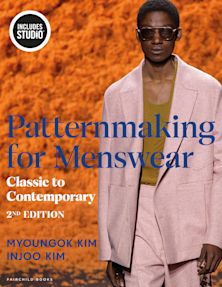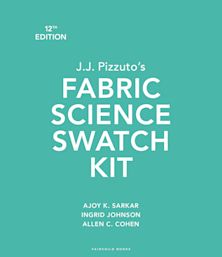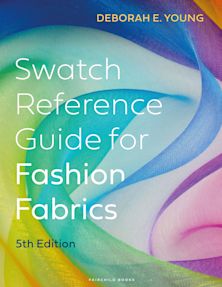- Home
- ACADEMIC
- Fashion
- Fashion Design
- Basics Fashion Design 06: Knitwear
Basics Fashion Design 06: Knitwear
You must sign in to add this item to your wishlist. Please sign in or create an account
Description
Basics Fashion Design 06: Knitwear is a practical introduction to the use of knitwear in fashion design, richly illustrated with examples and easy-to-follow diagrams. It describes the many varieties of yarn and fibre, their characteristics and their behaviour, from the traditional to the contemporary. It explains the relevant machinery and tools, and the types of work that can be produced on each.
Basic techniques on domestic machines are discussed, leading to a section on how to create a knitting pattern. Details and trims are also examined, outlining embellishment, buttonholes and fastenings.
The book also discusses the knitwear industry and offers useful information on the various career pathways. Interviews with international designers, each at a different level within the industry, provide further insight into the business as a whole.
Table of Contents
Approach to knit: Reinventing traditional knitting; Yarns and fibres; Construction of knit; Developments in design and technology.
Creative development: The brief; Research; Design development; Colour; Sculptural form; Presentation and evaluation.
Construction through pattern and texture: The tension swatch; Basic techniques; Lace; Surface texture; Patterned knits.
Construction through shape: Partial knitting: three-dimensional effects; Creating flared shapes; Increasing and decreasing; Draping and shaping; Creating a knitting pattern.
Details and trims: Collars and neckbands; Hems and edges; Buttonholes and fastenings; Hand-finishing techniques; Embellishment; In the industry.
Conclusion.
Glossary.
Useful resources.
Shops and suppliers.
Bibliography.
Index.
Acknowledgements and picture credits.
Working with ethics.
Product details
| Published | 01 Nov 2010 |
|---|---|
| Format | Paperback |
| Edition | 1st |
| Extent | 184 |
| ISBN | 9782940411160 |
| Imprint | AVA Publishing |
| Illustrations | 200 colour illus |
| Dimensions | 230 x 160 mm |
| Series | Basics Fashion Design |
| Publisher | Bloomsbury Publishing |
About the contributors
Reviews
-
An exciting and inspiring book covering all aspects of knitwear design. This is essential reading for any knitwear student.
Katherine Brotheridge, University of Northumbria, UK
-
No 6 in AVA Academia's Basics Fashion Design series is a must-have handbook for the aspiring knitwear designer. This new book by Juliana Sissons is a great mix of practical how-to information and plenty of inspirational examples of the craft by both established and exciting, emerging knitwear designers...This is a great, accessible little book, which we can highly recommend as a mine of information and inspiration for student designers, teachers and just about anyone with an interest in knitwear.
Joyce Thornton, Artsthread, Nov 2011
-
...a fascinating study of knitwear design, from the initial approach to creative development, construction through both texture and shape, and details.
There are some incredible photographs, from swatches and sketches to full blown catwalk images showing the most innovative techniques you can do with knitting. Juliana's research is incredibly detailed and interesting without being too academic. I thought this book was fascinating.Katy Evans, Knitting magazine, 2012
-
This is a super book that provides detailed information to discuss the creative design process – looking specifically at knit for fashion. The quality of the visual resources is excellent and complements the text well ... Highly recommended for any programme which includes creative knit.
Julie Haslam, Manchester Metropolitan University, UK
-
Visually exciting; well documented; clear images and well described ... Really easy to read. Broken up into bite size chunks. Clear examples of the knits.
Sofi Datoney, University of Bolton, UK
-
This text is well laid out and presents both the technical and creative aspects of knitted fabric and clothing development. High quality images are used which reflect the complexity of pattern and stitch development clearly. This text complements textile science and textile design.
Gayle Ramsden, University of the Fraser Valley, Canada



































